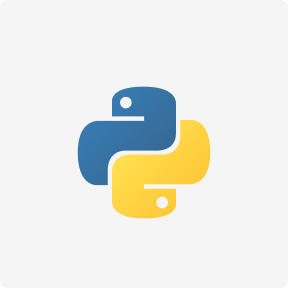AI monitoring tools ensure that best practices are rigorously adhered to. Toolshero supports people worldwide (10+ million visitors from 100+ countries) to empower themselves through an easily accessible and high-quality learning platform for personal and professional development. This process is repeated again and again, with each iteration yielding a new version of, for instance, the software. An existing system is replaced by a new system that consists of replaced components or modules to ensure that it meets new requirements. SAD is mostly used to find a balance between requirements at a higher level. The seventh phases of the Systems Development Life Cycle (SDLC) is often ignored or missed.
The iterative lifecycle model starts with the implementation of a small set of new software requirements, and iteratively improves the evolving versions until the new system is fully implemented. The waterfall approach means each phase must be completed before the next phase system development cycle can begin. These can be solved during the maintenance phase when the whole system is refined to improve performance, or to meet new requirements. Sometimes staff will need additional training to meet this goal, new procedures must be put in place, or updates must be made.
Maintenance/Support
The lack of extensive pre-planning generally allows software to be written much faster and makes it easier to change requirements. In essence, the Agile approach puts a higher value on tasks that promote interaction, build frequent working versions, customers/user collaboration, and quick response to change and less emphasis on processes and documentation. The agile methodologies’ goal is to provide an iterative approach’s flexibility while ensuring a quality product.
- The adoption of these best practices known and established processes within the confines of a company is called inner source.
- Learning about major methodologies of SDLC, along with their benefits and drawbacks, enables you to set up effective system development processes that deliver the best possible outcomes.
- Tests should prove that the system complies with all design specifications and any required security measures.
- Learners are advised to conduct additional research to ensure that courses and other credentials pursued meet their personal, professional, and financial goals.
- Developers must now move into a maintenance mode and begin practicing any activities required to handle issues reported by end-users.
While a Waterfall model allows for a high degree of structure and clarity, it can be somewhat rigid. By making access to scientific knowledge simple and affordable, self-development becomes attainable for everyone, including you! Regardless if the team works with a document of functional requirements or a handwritten list, everyone must be able to understand each proposal, and each comment, to be involved. In short, this phase consists of collecting and interpreting facts, diagnosing issues, and proposing improvements for the system. If more people who know and use the system are present, the greater the chances are of finding valuable improvement points. The first phase is the evaluation of the existing, or current, system.
System Development Life Cycle US Guide
Test criteria are met prior to implementation of operational software. Difficult to define requirements at the beginning and difficult to change at a later stage. However, regardless of the model you pick, there are a lot of tools and solutions, like Stackify’s Retrace tool, to assist you every step of the way. “Let’s get this closer to what we want.” The plan almost never turns out perfect when it meets reality. Further, as conditions in the real world change, we need to update and advance the software to match. In short, we want to verify if the code meets the defined requirements.

Conduct with a preliminary analysis, consider alternative solutions, estimate costs and benefits, and submit a preliminary plan with recommendations. AI innovations continue to deliver big benefits to business and adoption rates will accelerate in coming years. A more concrete vision of project completion is gained via delivering different system variations that may more accurately define the final output. The Iterative model is often favored because it is adaptable, and changes are comparatively easier to accommodate. This is particularly important for large systems, which usually are more difficult to test in the debugging stage.
Basic 6 SDLC Methodologies
Any Forensic Laboratory employee that is involved in software development shall have the appropriate training, experience, and qualifications for the required development work. The second theme includes ways to determine the data necessary to produce the logical requirements specified by the organization. The System Development Life Cycle encompasses a series of interconnected stages that ensure a systematic approach to system development. The stages include Planning, Analysis, Design, Development, Implementation, and Maintenance.

The term was coined in the year 2001 when the Agile Manifesto was formulated. Among these, another software development process has been established in open source. The adoption of these best practices known and established processes within the confines of a company is called inner source. The V-model (which is short for verification and validation) is quite similar to the waterfall model. A testing phase is incorporated into each development stage to catch potential bugs and defects. New versions of a software project are produced at the end of each phase to catch potential errors and allow developers to constantly improve the end product by the time it is ready for market.
Phases
For example, define a nomenclature for files or define a variable naming style such as camelCase. This will help your team to produce organized and consistent code that is easier to understand but also to test during the next phase. This article will explain how SDLC works, dive deeper in each of the phases, and provide you with examples to get a better understanding of each phase. When teams have clarity into the work getting done, there’s no telling how much more they can accomplish in the same amount of time.
Users have gotten used to technology that simply works, and various methods and tools ensure that companies are led through the lifecycle of system development. There was a growing need for building large company systems, but the consumers and users in those days were far less demanding. They did not have a proper concept of what the possibilities would be on the short term. This model is suited for small teams who work to produce a set of features within fixed-time interactions, such as two- to four weeks, called sprints. Let’s walk through the four key elements of a Scrum model as depicted in Fig 10.4. SDLC models can therefore help projects to iterate and improve upon themselves over and over until essentially perfect.
Software Deployment
In other words, it defines the necessary steps needed to take a project from the idea or concept stage to the actual deployment and further maintenance. Rapid application development (RAD) is a software development (or systems-development) methodology that focuses less on planning and incorporating changes on an ongoing basis. RAD focuses on quickly building a working model of the software or system, getting feedback from users, and updating the working model.
Every hardware or software system will go through a development process which can be thought as an iterative process with multiple steps. SDLC is used to give a rigid structure and framework to define the phases and steps involved in the development of a system. Each company will have their own defined best practices for the various stages of development. For example, testing may involve a defined number of end users and use case scenarios in order to be deemed successful, and maintenance may include quarterly, mandatory system upgrades. Learning about major methodologies of SDLC, along with their benefits and drawbacks, enables you to set up effective system development processes that deliver the best possible outcomes. This approach implies a linear type of project phase completion, where each stage has its separate project plan and is strictly related to the previous and next steps of system development.
Testing Stage – Is It the Exact One We Needed?
Fundamentally, SDLC trades flexibility for control by imposing structure. It is more commonly used for large scale projects with many developers. This may involve training users, deploying hardware, and loading information from the prior system. From a research standpoint, it is crucial to monitor the system to gain an understanding of whether it is benefitting the business as expected and how the performance is influencing workflow. For the first few months after launching a new system, the business systems analyst should report on how it is running and the difference it is making.

